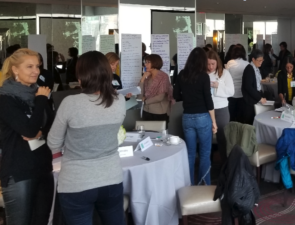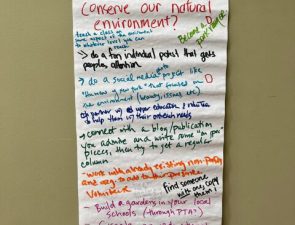Think of a great invention. In most cases, all you see is the famous final product. You don’t see the trial and error that came before the success. But no good invention was perfected instantaneously. A designer used curiosity to explore their ideas and prototype them to distill those ideas further.
Why Prototype?
Prototyping can give you data to make well-informed decisions. Through this method, we learn what works (and doesn’t) for us.
Prototyping your idea:
- Reduces risk. By testing your idea, you can make informed and confident decisions about how you want to allocate your resources moving forward.
- Exposes assumptions. You may realize that something you assumed wasn’t true.
- Engages others. You’ll meet people with similar interests who can support you and give you feedback while prototyping.
What Makes a Good Prototype?
We use prototyping to determine if an idea is worth a greater investment. Ideal prototypes should be:
- Cheap. You don’t want to invest too much initially into something that may not work.
- Quick. Your time is valuable, and you want to learn as much as you can as fast as you can.
- Easy. There’ll be less resistance to getting started.
Two Ways to Prototype a Life Design
There are two ways to prototype and neither is inherently better than the other. Determining which to use depends on your situation.
The first way is via a prototype conversation. Its purpose is to extrapolate from others’ experiences so that you can make better decisions. This can take the form of an informational interview or a casual chat. These conversations can also help you to build connections, which can help you later in your journey. You should also do your homework to ensure you have good questions to ask. Otherwise, it may be a waste of time for both of you.
It’s also important to clarify that this conversation is not a job interview. Make it clear that you are trying to learn from your interviewee’s story to determine if their role resonates with you and what you can learn from their experiences. Otherwise, your interviewee may perceive you differently, perhaps thinking, “I don’t have a job to offer—I should kindly end this conversation.”
The second way is by prototyping an experience. This allows you to try something out firsthand on a small scale or short-term basis. Whether your new experience comes from volunteer work, an internship, or shadowing, you can use the temporary experience to decide if you want to invest more into it.
The design process doesn’t always produce immediate results. Rather, it involves taking small steps towards your goal and embracing the possibility of failure. Don’t be afraid of a prototype that fails or one that doesn’t work for you. That’s great information! Prototyping will help take low-risk actions toward your goals.










